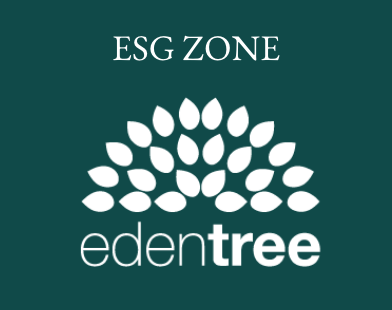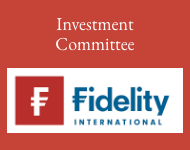To mark this year’s Earth Day (22 April), Jake Moeller, associate director responsible investment, Square Mile Investment Consulting and Research, highlights five funds which encourage the uptake of renewable energy and resource efficiency.
First held in 1970, Earth Day is a global event which aims to raise awareness of initiatives that protect the environment. Over one billion people across some 193 countries participate each year, making it one of the most extensively observed movements dedicated to meeting the challenges face by the planet.
This year, the theme for Earth Day is ‘Our power, our planet’, seeking to encourage society to embrace renewable energy and triple its adoption by 2030. With a new incumbent in the White House whose election mantra was ‘drill, baby, drill’ and who has historically taken a negative view of renewable energy, this theme could not be more apt or timely.
When assessing responsible investment strategies at Square Mile, we run portfolios through our proprietary 3D dataset of approximately 10,000 company revenue types, grouped into some 390 distinct categories. These are then mapped against 3D’s thematic classifications to highlight portfolio tilts to sustainable themes, such as renewable energy and resource efficiency. For investors who subscribe to the ambitions of Earth Day, this can help identify funds whose exposures are strongly correlated to the transition to clean energy.
One such fund is the Square Mile Responsible A-rated Ninety One Global Environment fund which has a 13.5% weighting to firms associated with renewable energy and an impressive 30.4% exposure to firms involved in resource efficiency. It has a well-considered approach to decarbonisation applied by a highly experienced team of managers. It is structured to deliver a high environmental impact, adopting an investment process that ensures that at least 50% of a company’s revenues come from environmental solutions relating to either renewable energy generation, electrification of transportation, improved energy efficiency, or a combination of the three. In addition, the team compiles an annual impact report for the fund, detailing aggregated and company level impact analysis, along with ESG engagement targets and progress made by each company in the portfolio. This provides a high level of reassurance to those investors who seek evidence of the positive impact that their investments have on the environment.
The Templeton Global Climate Change fund, which holds a 3D Silver rating , seeks to contribute towards climate change mitigation and adaptation as defined by the Paris Climate Change Agreement, while delivering capital appreciation through a portfolio of global equities. In aggregate, our analysis shows that the fund has achieved around a 34% exposure to revenue activities that contribute to solutions to environmental and social challenges. Of this, it has an approximate 9.0% and 14.6% exposure to the themes of renewable energy and resource efficiency respectively. It achieves its renewable energy objective through investing in alternative energy generation, mostly from wind, solar, and hydroelectric sources. It also invests in semiconductors and battery storage, which jointly make up most of its exposure to resource efficiency.
The Responsible A-rated Regnan Global Equity Impact Solutions fund, which also holds a 3D Gold medal, aims to deliver capital growth by investing in global equities. It has a high exposure to revenue activities associated with energy efficiency at circa 20.6%. The team’s investment philosophy is based on a simple premise: if a company is capable of contributing to solutions towards the underserved needs of people and our planet, it will be rewarded with a growing market, as demand outstrips supply. The team believes that innovative companies focused on solving environmental and societal challenges are well-positioned for growth in the future, particularly where the need for a solution remains largely unmet. The process that its managers adopt is designed to ensure that only truly mission-driven companies which can drive additional positive impact through delivering a solution to a particular United Nations Sustainable Development Goal (UN SDG) make it into the portfolio. Its 3D theme of resource efficiency is mainly expressed through activities such as factory automation, fluid power control equipment, rapid prototyping and semiconductors. It also has a five per cent exposure to revenue activities associated with renewable energy.
Another fund that is heavily invested in companies that help achieve resource efficiency is the M&G Positive Impact fund with an exposure of approximately 18.5%. This Responsible A-rated fund should also deliver capital appreciation through a concentrated, high-conviction portfolio of typically fewer than 40 names. Resource efficiency includes companies that develop alternative or complementary technologies aimed at driving efficiencies, reducing input, and minimising waste within processes. Its underlying philosophy holds that it is possible to make a wider positive social and/or environmental impact by investing in companies that address the world’s major challenges. The fund seeks to ‘democratise impact investing’, and follows a rigorous selection approach with different categorisations, from specific impact themes to intentionality, materiality and measurability. Only companies with an explicit intention of addressing a range of societal and environmental issues are eligible for inclusion in the portfolio. The fund embraces the UN SDG framework and invests in companies focused on six key areas, mapped against the SDGs: ‘Climate Action’, ‘Circular Economy’, ‘Environmental Solutions’, ‘Social Inclusion’, ‘Better Work and Education’ and ‘Better Health, Saving Lives’.
Although it does not have an explicit responsible investment objective, the Square Mile A-rated Polar Capital Global Technology Trust has an impressive revenue exposure of 21.6% to energy efficiency. Its managers believe that the growth in a company’s earnings drives its share price appreciation and that the most attractive opportunities are found in the next generation of technology leaders. They apply a bottom-up approach, referencing top-down considerations, to identify companies with established, profitable business models which they believe are poised for rapid growth as they enter mainstream use. The natural dynamism of the technology industry not only represents an opportunity for new businesses but also creates threats to established incumbents. The team believes that generalist investors often underestimate these threats and the potential for disruptors to turn established industries upside down.
It’s important to note that any fund containing material thematic exposures, can exhibit different volatility characteristics in relation to the broader market and other funds.
Past performance is not a reliable guide to future returns. You may not get back the amount originally invested, and tax rules can change over time. The writer’s views are their own and do not constitute financial advice.































